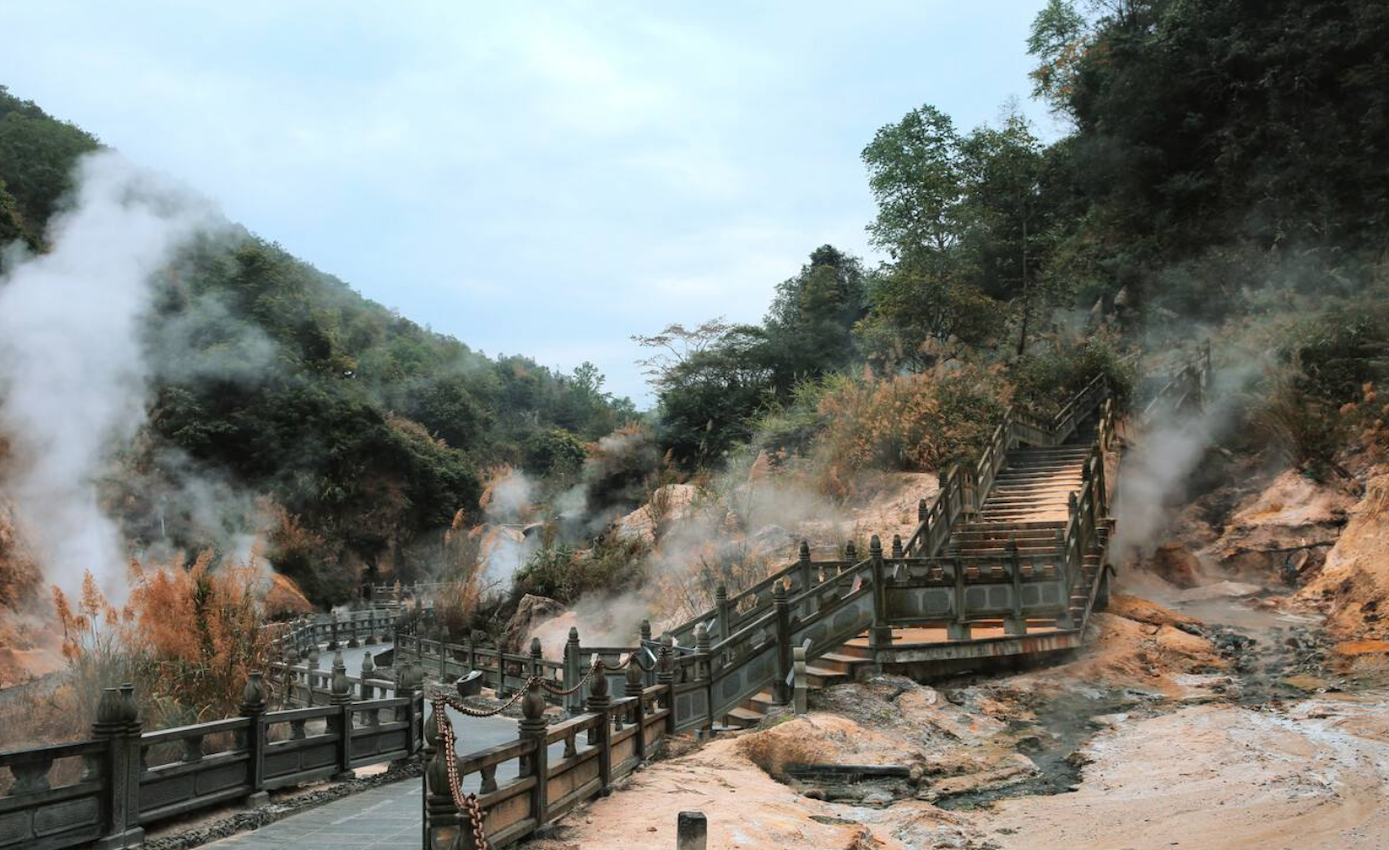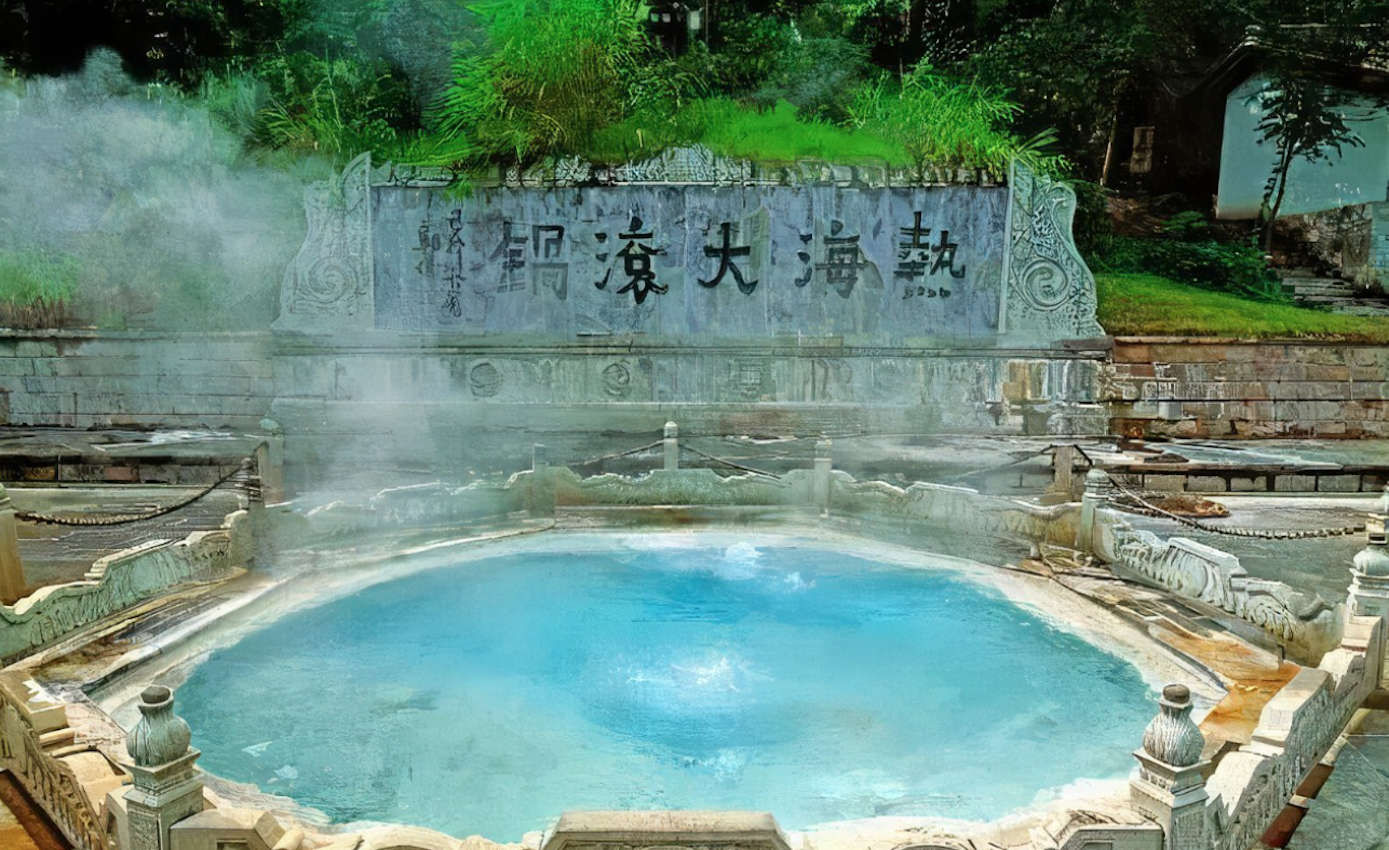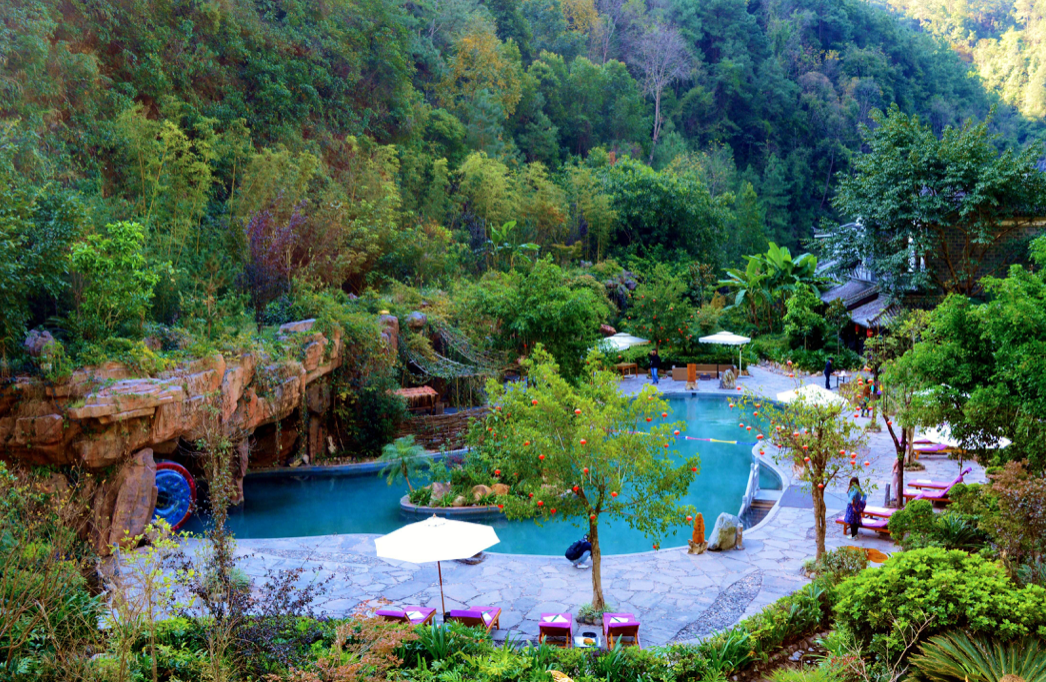
The Hot Sea National Scenic Area
As one of the three major geothermal areas in China, Tengchong boasts over 80 springs of hot water and hot vapor, called “Hot Sea”. The Hot Sea National Scenic Area, with an area of 9 square kilometers, lies 20 kilometers southwest of the county seat and in the center of the geothermal area. Its unique geothermal landscape has won the Hot Sea the fame of one of the twelve wonders in Tengchong. The geothermal activity of the Hot Sea is characterized by 7 landscapes: pant pore, steaming surface, boiling spring, fountain, hot water sinter, hydro geothermal outbreak, and poisonous gas pore. The whole area is surrounded by mountains and the Zaotanghe River (Bathing-pond River) winds its way through the mountains, thus forming a great many fascinating scenic spots.

In addition, the springs of hot water and vapor contain various minerals. Taking a bath in a spring of hot water or vapor can not only improve one's health but also help to cure many diseases. Therefore. the Hot Sea is becoming a more and more popular resort for therapeutic rehabilitation and holiday-making activities in Yunnan Province.

Walking along the Zaotanghe River, tourists will come to the Hot Sea valley, where hot springs are compactly distributed. Here steam seems to be rising from everywhere, from the river, from the springs, and the ground, so the whole valley is shrouded in vapor and mist. No wonder the area is vividly named “Hot Sea”. Each spring has its own feature. Frog Mouth, with a temperature of 95 degrees centigrade, ejects water about every three seconds. Pearl Spring is so named because bubbles keep coming out from the bottom. Drum-beat Spring produces sounds like beats of drums in the ancient battlefields. Spectacles Spring is made up of two springs looking like a pair of spectacles. On the northern bank of the Zaotanghe River is a swimming pool called the Pond of Beauties. It is said that a beautiful fairy used to bathe in the pond, thus it got the name. The water here is nutritious to the skin and has curative effects on skin diseases. What is even more incredible is Pregnancy-inducing Well. It is said that married women who have drunk the water will become pregnant. It has been scientifically confirmed that the water in the well contains radon, which has some curative effects on women's diseases.

The most spectacular view in the Hot Sea is the Big Boiling Pot, around a spring of 6. 12 meters in diameter and 1. 5 meters in depth. As hot water is ejected in bounding streams intermittently with a thunderous roar, it is so named by local people. On a rock 300 meters away from the Big Boiling Pot are inscribed two Chinese characters “Hot Sea" written by Mr. Li Genyuan, a famous democracy revolutionary pioneer in China. The surface temperature of the spring is 96. 6 degrees centigrade and at its bottom, the temperature is as high as 102 degrees centigrade. It is said that a bull grazing on the slope over the Big Boiling Pot slipped and fell into the pot. In no time, its flesh and bones were separated. When the owner came to rescue it, he could only find its bones.
Near the boiling spring are a few troughs where people can make use of the heat to steam rice and eggs. Some vendors bundle up eggs with rice straw or bamboo strips and cook them in the troughs. Then they sell eggs in bars to tourists. This is one of the 18 well-known oddities in Yunnan --Eggs are sold in clusters.

With the development of tourism, the Hot Sea has been built into a well-equipped bathing resort. Along the bathing valley corridor, there are 19 bathing ponds, each containing a different traditional Chinese medicine. Each pond is intended to cure a particular illness. Mineral-rich spring water and vapor have wonderful curative effects on more than ten serious diseases such as rheumatoid, osteoproliferation, apoplexy sequel, and skin diseases. So the Hot Sea is indeed an ideal place for sightseeing, holidays, and therapeutic rehabilitation.
Photo Resource: Internet
If there's any copyright issue involved, please contact us to delete.



